Writing Sample
Taiwan’s Evolving Role
in the Global System of Nations:
Taiwan as an Organizing System
Overview
Taiwan, officially known as the Republic of China (ROC), is located 180 kilometers east of the country commonly known as China, the People’s Republic of China (PRC). Since 1949, Taiwan has been governed independently of China with its own democratically elected president. In the 1992 consensus, the Chinese Communist Party asserted the “one China” policy claiming Taiwan as a part of the mainland. The ruling party in Taiwan, Kuomintang (KMT), disagreed with the consensus. The relationship between Taiwan and China remains ambiguous to this date. Taiwan’s legal state is far more complex than merely which political party is in control. Understanding Taiwan as an organizing system through the lens of political, language, and ethnic identity would allow one to recognize the evolving role of Taiwan in the global system of nations.
What Is Being Organized?
Taiwan is a multilingual and multiethnic society with a rich history and culture. This is ultimately due to complex political events, substantially influenced by European exploration, China’s imperial history, the Chinese Civil War, and World War II. The system of nations is being organized. The political events dramatically influenced and shifted Taiwan’s language and political structure at the institutional level. Furthermore, the geographic landscape has played an important role in capturing Plato’s idea of carving nature at its joints, creating different cultural tribes within Taiwan. The identity of the residents in Taiwan is organized at the individual level, while languages and ethnic groups are organized at the cultural level.
Why Is It Being Organized?
China and its many dynasties have one of the most extended histories. In 1912, Qing Empire’s imperial rule was overthrown by Chinese Nationalist revolutionaries establishing the ROC. Around the same time, with the influences of Western political philosophy, the Chinese Communists Party (CCP) was established in 1921. Later on, in 1949, the declaration of the People’s Republic of China (PRC) was announced. Both ROC and PRC have claimed to represent all of “China,” creating a complex international relationship[1]. The many movements that transpired throughout Taiwanese history can be divided into internal and external issues.
Internal issues primarily arise from the complex ethnic identities of the residents in Taiwan. Most residents of Taiwan were immigrants from mainland China from different periods in history, sharing a similar ancestral past. With the cultural, political, and social movements, new identities were formed, creating complex layers in the organization of ethnic identities in Taiwan. To understand why individuals with seemingly the same heritage can identify as Taiwanese, Chinese, or Taiwanese-Chinese, one must acknowledge Taiwan as an organizing system.
Though the international status remains ambiguous, Taiwan is in a unique position globally, characterized as a strategic liability in the U.S.-China relationship. Over the years, Taiwan has been a critical factor that could eventually spark a war between the U.S. and China, namely due to political and geographical reasons such as the capability for Taiwan to serve as a barrier between China and the U.S.[2]. Furthermore, Taiwan has been the largest supplier of semiconductors and made-to-order chips and supplies 90% of advanced processors on the market[3]. If China were to control Taiwan, the chip shortage would be magnified and significantly impact downstream industries that rely on them globally. Understanding the social and political history can help define the current Taiwanese identity regarding its international relationships.
When is it Being Organized?
In the 16th century, Taiwan was known as Formosa, the beautiful island. This name was first recorded by the logs of a Portuguese ship that sailed past Taiwan in 1542. Later on, in the 1600s, the Dutch and Spanish established bases in different parts of Taiwan but were driven out by the Ming dynasty’s conquest (1368-1644). As the Qing dynasty (1644-1912) overthrew the Ming dynasty, it controlled partial coastal areas of Taiwan. It was not until 1885 that Taiwan officially became a province of the Qing Empire[4]. Towards the end of the Qing dynasty, it could no longer control all of its lands. As the Qing government lost the war with Japan, Taiwan was ceded to Japan, where Japan ruled Taiwan for fifty years until the end of World War II, when the Japanese surrendered. Taiwan’s “independence” was suggested as Korea became independent from Japanese domination. Counterintuitively, President Franklin Roosevelt suggested Taiwan be returned to China in 1943[5]. Korea became a country after independence where the United States and Soviet Unions divided the county without a natural border into North and South. The intentional organization of Korea, lead to tensions between South Korea and North Korea that continue to this date. In contrast to Korea’s situation, the ocean between Taiwan and mainland China suggested a natural boundary between the two sides. Yet, Taiwan did not become an independent country.

Figure 1. Timeline of Taiwanese History
During this time in mainland China, from 1927 until World War II, Chinese Nationalists and the Chinese Communist Party were warfighting over territories. In 1937, Japan launched a full-scale attack on China, forcing the two separate parties to ally and eliminate Japan to protect China as a whole. The truce ended in 1946 with the Chinese Communist Party gaining support from the Soviet Union, and the Nationalists fled to Taiwan. In 1949, Mao Zedong and the Chinese Communist Party claimed victory and established the People’s Republic of China (PRC)[6].
How Is It Being Organized?
Language and Ethnic Identity
The population of Taiwan consists of four primary ethnic groups: Chinese mainlanders (13%), Hakkas (12%), Aborigines (1.8%), and Taiwanese (73.2%)[7]. The Aborigines/ Formosan tribes in Taiwan resided on the island for thousands of years, belonging to the subgroup of the Austronesian family. The Mainlanders (waishengren, 外省人) are supporters of Chiang Kai Shek who fled to Taiwan during the Chinese Civil War in 1949, while the “native” Taiwanese, who are descendants of residents of Taiwan, Holo people, is known as Taiwanese (benshengren, 本省人). Hakka, another immigrant group migrated to Taiwan after the Holo people in the Qing dynasty and is the third latest ethnic group in Taiwan. With the diverse range of racial groups, Taiwan’s spoken languages evolved.
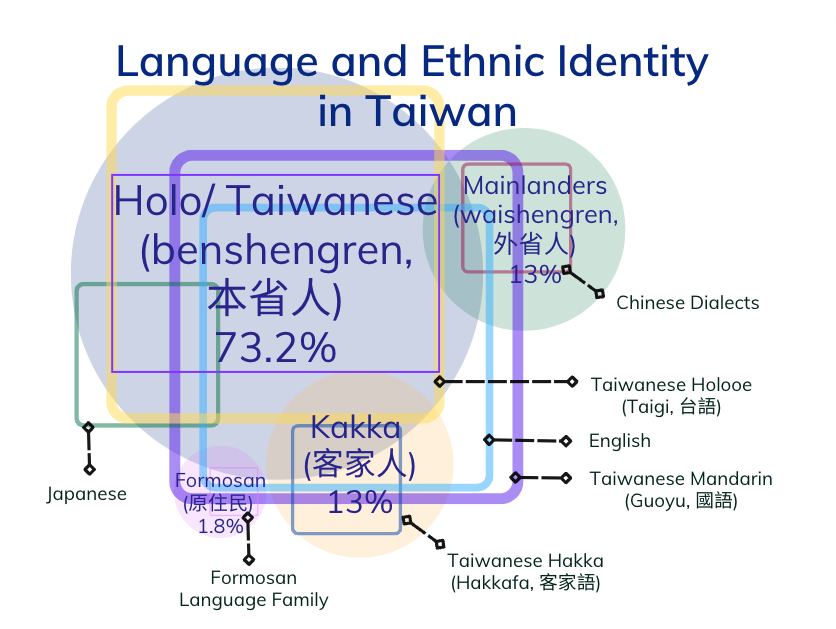
Figure 2. Taiwanese Language and Ethnic Proportion Diagram.
In the diagram, the circles represent the ethnic identity, and the squares represent the spoken languages in Taiwan.
Before 1895
Austronesian-speaking aboriginal Formosans have lived in Taiwan for thousands of years. Settlers from southern mainland China started to migrate to Taiwan in large groups in the 1600s. The most significant two languages they brought with them were the Holooe and Hakka, with Holooe being the majority. Since intermarriage with aboriginals was frequent, the most common language in Taiwan became Holooe.
Japanese Period 1895- 1945
Under Japanese colonization, transportation and public schools were established. Initially Chinese language was tolerated until 1937 with the outbreak of the Sino-Japanese War. In 1939, the Japanese government launched the “Name-changing Campaign” to encourage the Taiwanese to adopt Japanese. Though Japanese was not the primary language, understanding of the Japanese language raise from 51% to 71% from 1940 to 1944[8]. Before the language policy, Taiwan did not have a common language.
1945 – 1987
When the Chinese Nationalists (mainlanders) took control of Taiwan, the ruling party Kuomintang (KMT) tried to eliminate Japanese influences in Taiwan and declared a Mandarin-only language policy, characterized as “Mandarin-only with the suppression of vernacular languages.”9 At the same time, martial law was in place, disadvantaging the majority of local Taiwanese who could not speak Mandarian and was controlled by the minority of mainlanders. Taiwanese culture was banned while promoting Chinese culture. The events introduced conflicts between mainlanders and Taiwanese, emerging a different sense of Taiwanese identity.
After 1987
As the martial law was lifted, the policy transit from “Mandarin-Only” to “Mandarin-Plus” with more tolerance to “native” Taiwanese culture and languages. In 2001, all primary schools introduced “mother tongue” and English courses at the same time to promote internationalization and “Taiwanisation,” reinforcing Taiwanese identity.
Geographical
The geography of Taiwan consists of over two-thirds of foothills and mountains in the central region with flat plains in the west and a sub-tropical climate. The natural boundaries separated the various language and ethnic groups into categories. Most of the Formosians/ Aborigines live in the mountain regions in Taiwan. Most of the Taiwanese Holooe-speaking population lives in the southern part of Taiwan, while the Mandarin-speaking population lives in the northern part of Taiwan. Generally, both Taiwanese (Holooe) and Mandarin are equally ordinary in Taiwan. It is more common to find a population that can only speak Mandarin in the main cities, and a population that can only speak Holooe in the countryside. The primary Hakka tribe lives in the northwest region of Taiwan, with the subtribes in the southwest regions. Due to the geography, most of the population in Taiwan lives on the west side, as it is difficult to cross the mountains that run through the center. Therefore, the east region of Taiwan has a mixture of cultures and languages from different settlements that stayed in the area after migrating.
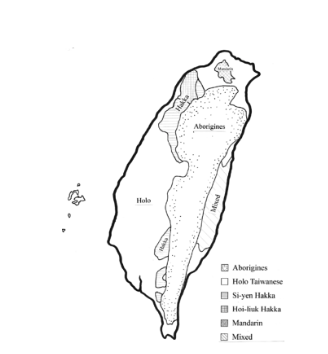
Figure 3. Distribution of Langues in Taiwan[9]
Political
The political system in Taiwan is complex due to its rich history. The current political culture can find origins in the local ruling, Western colonialism, China’s bureaucratic system, and Japanese feudalism[10].
Political Parties
Since the Chinese Nationalists moved to Taiwan, Taiwan became a one-party system with Kuomintang (KMT) monopolizing the political party functions. In the 1970s, independent opposition politicians began to assemble as Taiwan became more influenced by Western culture. In 1987, President Jimmy Carter unexpectedly announced to establish formal diplomatic relations with the People’s Republic of China, and the credibility of the KMT was undermined. At the same time, in an effort to democratize Taiwan, there were protests on the street, and the Democratic Progressive Party (DPP) was founded on breaking KMT’s one-party rule[12]. Marking the end of martial law, the number of political parties in Taiwan grew rapidly in 1989. Taiwan is now a two-party system, with KMT and DPP being the primary parties dominating the political landspace. Due to the ambiguous international state, the Taiwanese political system is more prone to international influences and became politically progressive where Tsai Ing-wen, a member of the DPP, became the first female president of Taiwan in 2016.
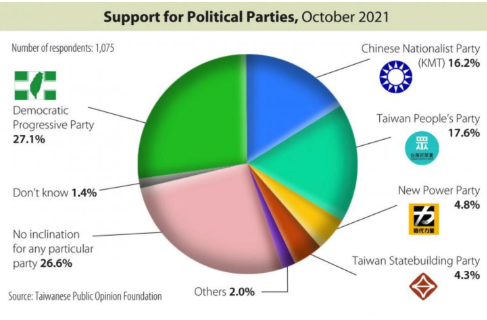
Figure 4. The Popularity of Political Parties in Taiwan in October 2021[11]
Geopolitical
Most members of the DPP identify themselves as Taiwanese and live in the southwest region of Taiwan, while the KMT members who are more likely to identify themselves as Chinese live in a wide spread of areas. In 1948, Chiang Kai-shek led the KMT to retreat to Taipei, Taiwan which is the current capital and located in northern Taiwan. Under the martial law, the resources were not distributed equally among all citizens; more governmental resources were granted to northern Taiwan in preparation for war with China. The imbalance of resources led to political movements to push Taiwan to be democratic and created a difference between how the “south” and the “north” identify themselves culturally and politically. Until the 2000s, mainlanders, Kakka people, and Formosans were significantly more likely to support the KMT, especially at the local political teirs such as the municipal level due to the lower education level[14]. Younger and more educated generations are not likely to return home for voting unless it is a presidential election creating a wider gap between the KMT and DPP at the local level.
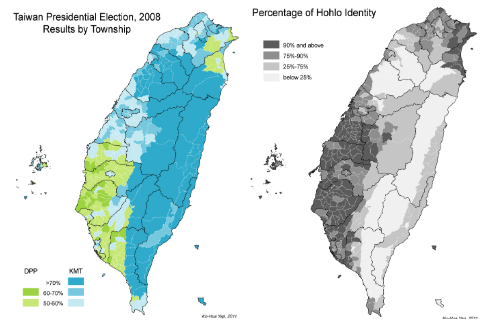
Figure 5. Taiwan Presidential Election Results by Party and the Distribution of Taiwanese/ Holo Identity[13]
Central Govenement System
In 1947, the Constitution of the ROC was established based on Sun Yat-sen’s goal of establishing republicanism in China. Taiwan’s central government is patterned after the United States’ three-branch system (Legislative, Executive, and Judicial), with the addition of two more branches (Examination and Control Branch). The Legislative, Executive, and Judicial in Taiwan have similar functions to the U.S. government. The purpose of having the two additional branches is to separate the powers within the branches further. The Examination branch is in charge of managing the civil services system related to validating the qualification of government staff, which is similar to the Human Resources department of a company. In the U.S. government structure, the three branches perform checks and balances on each other. In Taiwan, the Control branch is the supervisory and auditory branch to monitor the other branches.
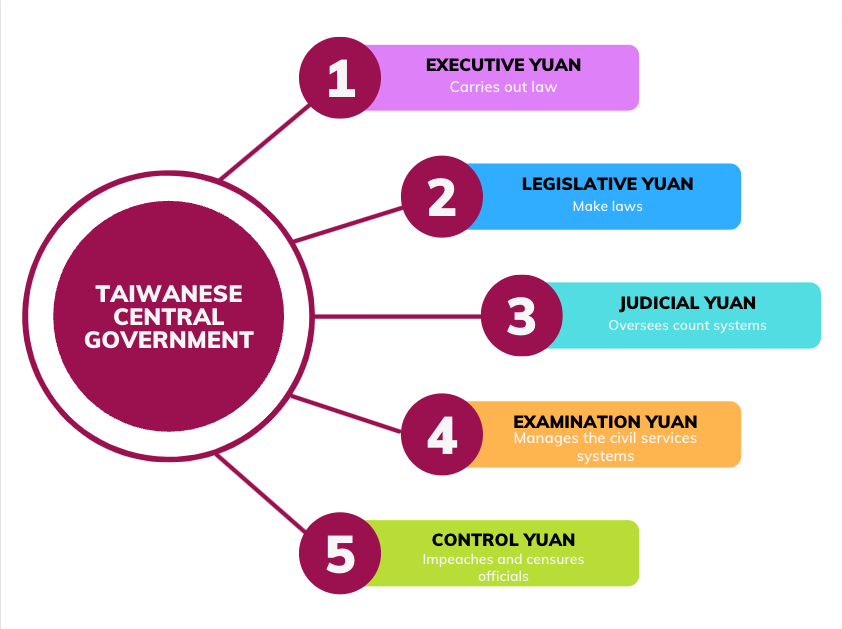
Figure 6. Structure of the Taiwanese Central Government
Work Cited
- https://history.state.gov/milestones/1945-1952/chinese-rev
- Tucker, N. B., & Glaser, B. (2011). Should the United States Abandon Taiwan?. The Washington Quarterly, 34(4), 23-37.
- https://thefederalist.com/2021/11/01/if-china-controls-taiwans-chip-manufacturers-it-will-control-the-world/
- https://www.taiwan.gov.tw/content_3.php
- Gordon, L. (1968). American Planning for Taiwan, 1942-1945. Pacific Historical Review, 37(2), 201–228. https://doi.org/10.2307/3637072
- https://guidetotaipei.com/article/overview-of-chinese-civil-war
- Huang, S. (2000). Language, identity and conflict: A Taiwanese study.
- Scott, M., & Tiun, H. (2007). Mandarin-Only to Mandarin-Plus: Taiwan. Language Policy, 6(1), 53–72. https://doi.org/10.1007/s10993-006-9040-5
- Chiung, W. V. T. (2001, June). Language and ethnic identity in Taiwan. In 7th Annual North American Taiwan Studies Conference, June (pp. 23-25).
- Copper, J. F. (2018). Taiwan: Nation-state or province?. Routledge.
- https://www.taipeitimes.com/News/taiwan/archives/2021/10/27/2003766845
- Copper, J. F. (1989). The Evolution of Political Parties in Taiwan. Asian Affairs: An American Review, 16(1), 3-21.
- https://nottspolitics.org/2011/11/02/the-geography-of-voting-patterns-in-taiwan/
- https://zh.wikipedia.org/zh-tw/%E5%8D%97%E7%B6%A0%E5%8C%97%E8%97%8D


